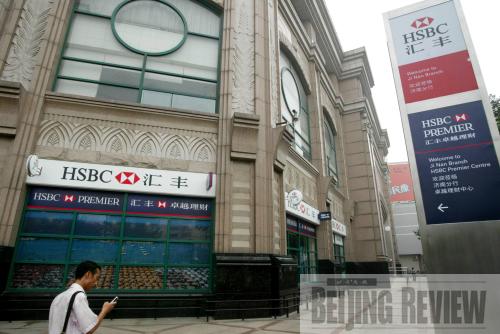|
 |
|
HOLDING UP: Foreign investment is an important component of the Chinese economy that brings in capital, management expertise and technological prowess (YUAN PENG) |
For the growth-hungry Chinese economy, the driving force of foreign investment accompanied with advanced technologies and expertise, can never be underestimated.
Since its early years, the country has been dedicated to bringing in foreign investors. In the 1950s, investments worth of $2.6 billion from the former Soviet Union and Eastern Europe were a great help for the country's construction of 156 projects in a number of sectors including machinery, auto-making, oil and power.
Later, in the 1960s and 1970s, the foreign capital flowed inward in the form of loans – China borrowed more than $10 billion to purchase industrial equipment. But its implications were barely visible due to high interests and the stalling domestic economy.
However, the reform and opening up starting from 1978 opened a window for more foreign investors tapping into China.
In fact, by the end of 2008, the country now has approved more than 660,000 foreign-funded enterprises, bringing in accumulated capital of more than $870 billion. This makes China the favorite investment destination among developing countries.
The increasing openness of the Chinese economy was believed to be part of the reason for the investing spree. Shying away from a previously cautious approach, China has, since 1992, begun to loosen controls over foreign capital inflows, and opened up a number of state-controlled sectors. The foreign investments in actual use have soared to $11 billion in 1992 – nearly half the total from 1979 to 1991.
In addition, what appealed to foreign investors was a constantly improving market environment and legal system after China joined the World Trade Organization at the end of 2001. So far, more than 450 of the world's top 500 multinational companies have established a China foothold, many of which invest heavily in research and development (R&D).
There are more than 1,200 foreign-funded R&D centers across the country – and around 200 regional corporate headquarters in Beijing and Shanghai. As the economy grows beyond the labor-intensive manufacturing, many foreign investors are also moving up the value chain to focus on high-tech businesses with high added value, as well as on the service industry. In 2007, the service sector attracted 49 percent of the total foreign investments, up from 28 percent in 2003.
An indispensable role
Foreign investments helped accelerate the economic restructuring, and also added fuel to the rapid industrialization.
Over the past 30 years, China's foreign trade gained momentum thanks to the investment inflows. In 2008, the foreign-funded enterprises made up 55 percent of the total imports and exports, up from a minimum 0.1 percent in 1979.
Beside this, their advanced technologies and management expertise spurred the development of their Chinese counterparts.
In terms of taxation and job creations, their contributions were as well phenomenal. During the past 30 years, they have absorbed nearly 50 million into workforce, providing an effective cushion to the intensifying unemployment pressure. Moreover, they turned in more than 20 percent of corporate income tax of all enterprises in 2007.
However, the foreign-invested economic miracle has not been without its shortcomings.
Domestically, worries have been echoed about their mergers and acquisitions that might lead to monopolies, as well as the excessive reliance on foreign capital to spark the high-tech industries. In addition, controversies are heating up about their social responsibilities of energy conservation and environmental protection.
Overall, the vast Chinese market and its fast-growing economy still have ample room with which to expand foreign investment use.
But how to properly take advantage of this to the benefit of economic restructuring will continue to be the top priority.
The author is a research fellow at the Chinese Academy of International Trade and Economic Cooperation
| 